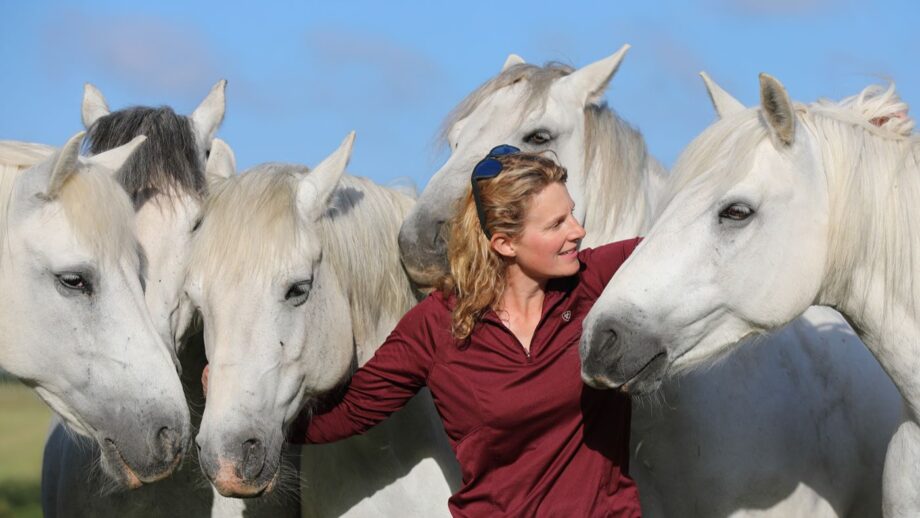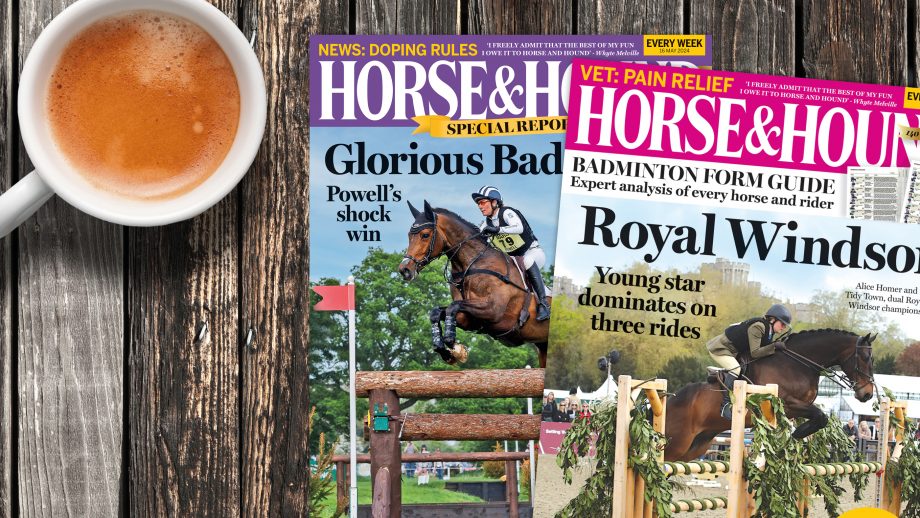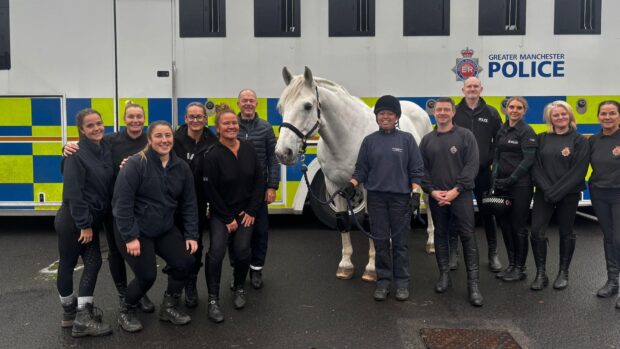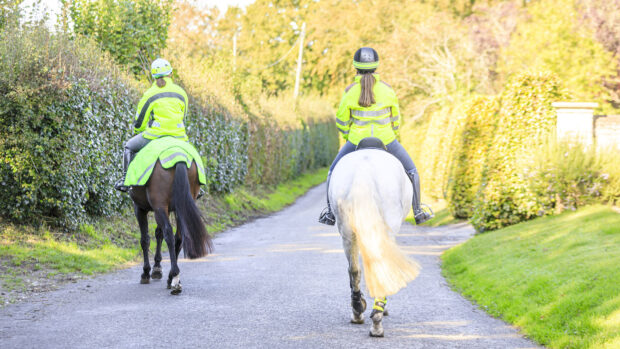With just two cues, you can create a framework for learning liberty work that your horse will understand and enjoy. With more and more riders making an introduction to liberty training alongside their work in the saddle, you might be curious about adding liberty exercises to your horse’s day-to-day routine.
Liberty training means different things to different trainers, but broadly speaking it encompasses anything a trainer does with their horse free from restraint, with no ropes, tack or training aids beyond cues or a long whip as a guide.
For expert free rider and liberty trainer Emma Massingale, liberty training’s scope is far-reaching.
“Most people do forms of liberty with their horse every day without realising,” she explains. “If they can pick out their feet, squash bothersome flies or brush them without tying them up, that’s the evidence their horse is on board and with them.”
If you’ve started making progress with beginner liberty work or feel that your horse would benefit from working in this way, read on for Emma’s simple exercises that will start you on your journey.
Introduction to liberty training
Teaching beginner cues
Emma is adept at cultivating a partnership with her horses in a state of freedom. However, handlers can only achieve this by first understanding how to get a horse to listen, which involves harnessing their horse’s ability to learn patterns.
“Many horses only have their headcollar and leadrope taken off when their owners let them go in the field, and they learn through repetition that this is when they’re free to run away and graze,” says Emma.
“This system absolutely sets a horse up to learn that running away from you equals fun, which makes liberty training exercises really hard to work on!”

If every time you remove the headcollar, the horse expects to gallop freely round his paddock, this is his learned experience of liberty. Credit: Alamy
She adds: “What we can do is use that same repetitive learning to teach them cues that make working at liberty, and a broader experience of life off the headcollar and leadrope, possible.”
Emma explains that you don’t necessarily need to be sure of your horse’s undivided attention before you start beginner liberty work. In fact, teaching two foundational cues is a great way to begin cultivating the togetherness required for successful liberty work.
“It’s comparable with training dogs, and even clicker training,” explains Emma. “It’s about marking a precise moment of desirable behaviour with a suitable reward.”
Teaching the horse to find the right answer
Emma explains that horses who understand when they’ve answered a question correctly become more engaged with their training.
“When you show them how to understand, ‘yes, that’s right’, you’re also teaching them to look for the right answer,” explains Emma. “To mark this moment, I say ‘good’ or ‘yes’.”
But in the search for the right answer, the horse might find the wrong one.
“So, I use sound, which means whatever you’re doing is incorrect,” she continues. “It’s never ‘no’, because we’re not telling the horse off for trying. That’ll just kill his desire to try.
“Instead, I use a quick ‘shh’ noise to say, ‘almost’. I recognise that he tried. Now, I want him to try something else.”
When horses are learning a new skill, it’s important to be picky about when you mark the right answer with “yes” so that they learn the right pattern.
“Alongside the vocal cue of ‘good’ or ‘yes’, I also use a high-value reward, such as a carrot, when they get it right for the first time,” Emma adds. “It’s about paying them fairly for the effort. Down the line, a scratch on the wither might be enough, but when they are first learning, they need something more.”

A high-value reward such as a carrot is appropriate when a horse has learned a new task. Credit: Alamy
Put it into practice
The principles of “yes” and “almost” can be taught alongside any new skill, be it teaching your horse to halt at your shoulder every time you stop, back up or move quarters away.
Important takeaways are only to reward when the behaviour offered is spot-on, and to reward well with a high-value treat the first time your horse gets it right.
If your horse loses interest in the session when the reward becomes a scratch on the wither, you can try lower-value treats such as fibre nuts.
Hotter and colder
By using “yes” and “almost”, you can create a cue-learning structure that resembles a game your horse will understand and enjoy. Plus, once “yes” and “almost” are learned cues, it will make teaching him new things much easier.
“It’s like the ‘hotter, hotter, colder, colder’ seeking game that kids play,” says Emma. “You’re teaching the horse to search out the right answer. Once they know this, teaching them something else becomes 10 times easier because they have a structure for the learning process.”
“Once they know how to learn, you can then teach them many, many different things.”

Emma Massingale with two ponies in a sailing boat. Once you have established liberty training, the world’s your oyster. Credit: Alamy
Did you enjoy this article? You may also like to read…

Clicker training: an expert guide to why, how and when to use it to benefit your horse

Interested in working horses at liberty? Here’s what you need to know about its history, approaches and best practice from expert horse trainers

‘Be the catalyst for fun in your horse’s life’: Emma Massingale’s expert tips to get a horse to tune in and listen to you

Is your horse too sharp to ride? Try these three-minute groundwork exercises to take off the edge and engage their brain before you get on

Groundwork for horses: what it is and why it’s useful

Subscribe to Horse & Hound magazine today – and enjoy unlimited website access all year round




